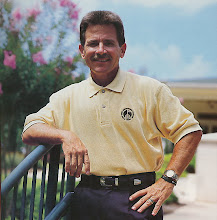Root Shearing Damage - Exposing Soft Greens To Play
USGA Article
Excitement for the upcoming golf season begins to build during late winter. While some golf facilities in the Northeast close for winter, others continue to allow play depending on the weather. When the weather is favorable, allowing play usually is a fairly simple decision. However, the decision becomes much more difficult when the weather fluctuates between extremes. Mild and sunny days in February and March might be enticing to golfers, but lasting turfgrass damage can result when winter play is allowed under the wrong conditions.
Playing golf during highly variable winter weather can result in turf damage. During late winter, cold snaps often follow periods of warm temperatures. Under these conditions, turf is extremely vulnerable to injury from traffic. Play during a sudden thaw can be especially damaging because the upper 1 or 2 inches of soil can defrost while the underlying soil remains frozen. Traffic under these conditions can shear turf roots at the interface between the thawed and frozen layers. Such shearing can compromise turf health come spring.
Frozen soils also cannot drain. When precipitation occurs, the surface of frozen soils will remain saturated and prone to injury. Soils also dry slowly during late winter due to short day length and cool temperatures, so even unfrozen soils will be slow to dry and firm up after precipitation. Soft surfaces are more vulnerable to damage from foot traffic, ball marks, rutting and compaction.
It is important to remember, no matter how thawed or frozen the soil is, turf is unlikely to be growing during winter. Grass that isn’t growing cannot recover from damage until spring. Therefore, turf damage that occurs during winter can have a cumulative effect that lasts until warm weather arrives and the grass is able to recover.
Before allowing winter play ask, what is the purpose of winter play? All golf facilities welcome additional rounds, but sometimes allowing play during winter presents more costs than benefits. Keep in mind that winter play under the wrong conditions may result in a net loss due to the expense of repairs or slow spring greenup.
https://www.usga.org/course-care/roots-are-not-elastic-54930.html
Roots Are Not Elastic!
WOW! The mercury pushes above the freezing mark for a couple of days in much of the region, and the questions regarding winter play have come rushing into our offices. The negative impacts of winter play are hard to quantify, which is what makes the topic so controversial. However, it is generally accepted that golfer traffic on dormant, frozen greens can create problems, even if only early in the growing season.
A bigger concern is playing on greens during freeze/thaw cycles, which are the conditions that are occurring right now. In recent days, the surfaces of greens have thawed, but underlying soils are still frozen within one or two inches of the surface. Under these conditions, the potential for root shearing is greatest. How much this actually occurs in debatable, but it is best to err on the side of caution and keep greens closed until thawing occurs deeper in the profile. Remember, if the underlying soils are frozen, water infiltration will not occur, thus keeping the greens spongy and more prone to mechanical damage from foot traffic and ball marks. In some instances, the need for revenue may trump caution, but beware of potential problems of subjecting greens to winter play.
A bigger concern is playing on greens during freeze/thaw cycles, which are the conditions that are occurring right now. In recent days, the surfaces of greens have thawed, but underlying soils are still frozen within one or two inches of the surface. Under these conditions, the potential for root shearing is greatest. How much this actually occurs in debatable, but it is best to err on the side of caution and keep greens closed until thawing occurs deeper in the profile. Remember, if the underlying soils are frozen, water infiltration will not occur, thus keeping the greens spongy and more prone to mechanical damage from foot traffic and ball marks. In some instances, the need for revenue may trump caution, but beware of potential problems of subjecting greens to winter play.





No comments:
Post a Comment